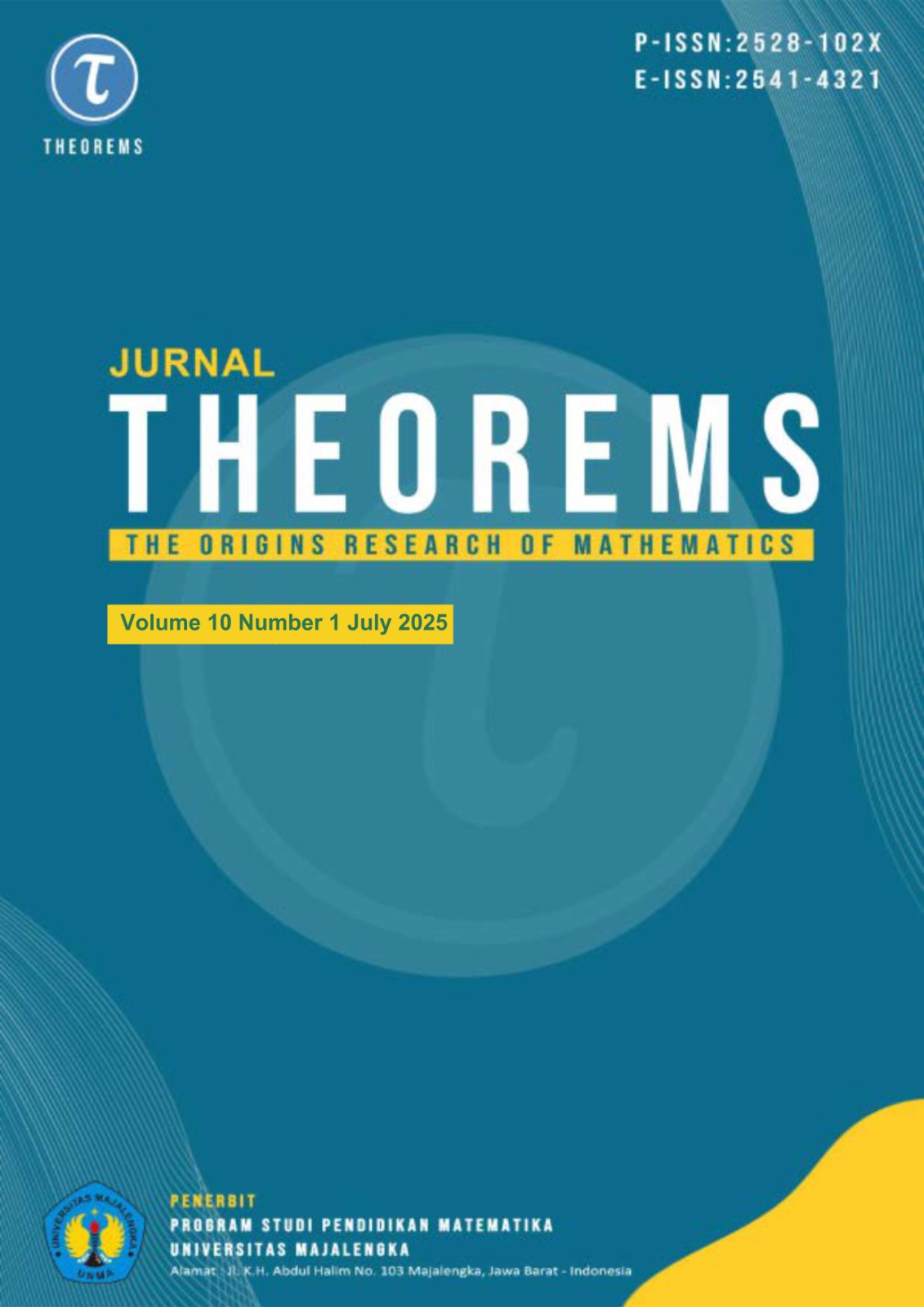Analysis emotional intelligence as a predictor of students’ mathematical thinking processes: insights from SDN 1 Pesanggrahan
DOI:
https://doi.org/10.31949/th.v10i1.14795Abstract
This study aims to determine whether emotional intelligence can influence how students think when solving math problems in elementary school. Specifically, this study focuses on three main things, namely: (1) determining the level of students' emotional intelligence, (2) observing the relationship between emotional intelligence and students' mathematical thinking abilities, and (3) determining the role of teachers in helping students manage their emotions when learning mathematics. This study employs a qualitative descriptive approach involving four fifth-grade students from SDN 1 Pesanggrahan, selected based on high, moderate, and low emotional intelligence categories. Data were collected through observation, interviews, and documentation, then analyzed according to themes aligned with mathematical thinking indicators and Goleman's emotional intelligence theory. The results of the study indicate that students with high emotional intelligence tend to think more systematically and are able to reflect on their thinking processes, while students with moderate and low emotional intelligence tend to experience difficulties. This study highlights the importance of mathematics education that also cultivates students' emotional intelligence, as well as the need for teaching strategies that balance emotional and cognitive aspects at the elementary school level.
Keywords:
Keywords: Analysis, Emotional Intelligence, Elementary SchoolDownloads
References
Creswell, J. W., & Poth, C. N. (2018). Qualitative inquiry and research design: Choosing among five approaches (4th ed.). Sage Publications.
Goleman, D. (1995). Emotional intelligence: Why it can be more important than IQ. Bantam Books.
Goleman, D. (1995). Emotional Intelligence: Why It Can Matter More Than IQ. Bantam Books.
Guest, G., Bunce, A., & Johnson, L. (2006). How many interviews are enough? An experiment with data saturation and variability.
Lestari, I., & Hidayat, W. (2020). The influence of emotional intelligence on students' learning outcomes in mathematics.
Mulyani, S., & Prasetyo, T. (2020). The role of teachers in shaping the emotional intelligence of students in elementary school.
Mulyani, S., & Prasetyo, T. (2020). The role of teachers in shaping the emotional intelligence of students in elementary school.
Polya, G. (1957). How to Solve It: A New Aspect of Mathematical Method (2nd ed.). Princeton University Press.
Polya, G. (1957). How to Solve It: A New Aspect of the Mathematical Method. Princeton University Press.
Polya, G. (1957). How to solve it: A new aspect of the mathematical method (2nd ed.). Princeton University Press.
Polya, G. (1957). How to Solve It: A New Aspect of the Mathematical Method (2nd ed.). Princeton University Press.
Putri, D. R., & Suryadi, H. (2020). Analysis of the relationship between emotional intelligence and students' self-adjustment and academic achievement.
Surya, E., & Saputra, E. (2021). Emotional intelligence and students' mathematical problem-solving skills: A correlational study.
Surya, E., & Saputra, E. (2021). Emotional intelligence and students' mathematical problem-solving skills: A correlational study.
Wibowo, A., & Yuliana, Y. (2020). Emotional intelligence and critical thinking skills of students in mathematics learning.
Zhao, Q., & Yang, X. (2020). Emotional intelligence and student learning: A study in classroom context.
Zhao, Q., & Yang, X. (2020). Emotional intelligence and student learning: A study in classroom context.
Published
How to Cite
Issue
Section
License
Copyright (c) 2025 Firliya Desi Desi

This work is licensed under a Creative Commons Attribution-ShareAlike 4.0 International License.








